Being bitten by a mosquito can be extremely annoying. Aside from stinging pain, uncontrollable itch, and redness and swelling at the bite site, their bite can also be infectious because they carry diseases. But before you slap and smack these wandering pests, are you sure that what you’re trying to kill are mosquitoes?
There are a few insects that look like mosquitoes but aren’t. Here are a few examples:
- Crane Flies
- Mayflies
- Fungus Gnats
- Midges
- Dixid Midges
- Owl Midges
- Dance Flies
- Wood Gnats
- Winter Crane Flies
In this article, you’ll get to know more of the identifying traits of mosquitoes and the other species that look like them, including the effective techniques in eliminating them and preventing their infestation.
What Do Mosquitoes Look Like?
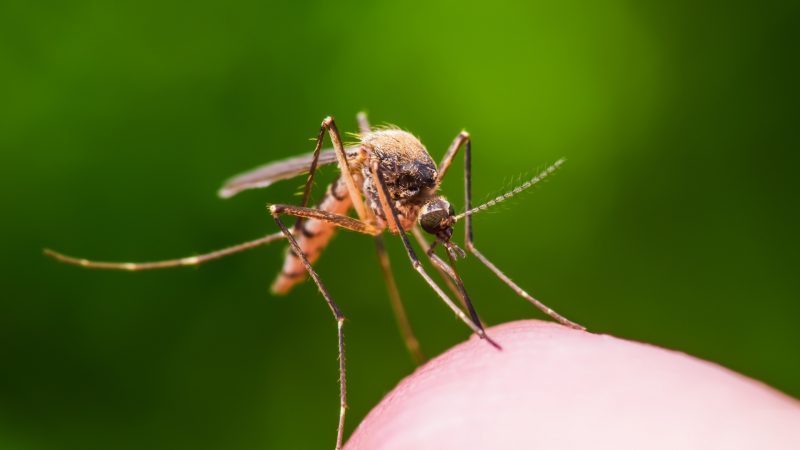
In general, mosquitoes have long and slender body structures, usually at 0.15 to 0.4 inches in length. They are primarily gray in color with silver, white, green, and bluish scales that can be found mostly on their bodies and veins of wings.
Additionally, they have long and thin legs and sucking mouthparts that are pointed and sharp. This is an important organ for them as it is their method of obtaining blood from their hosts.
The male mosquitoes are typically seen feeding on nectar and plant juices while the females predominantly suck on blood. This is because the proteins found in the blood facilitate the maturity of their eggs.
Mosquito-Like Insects | Information and Facts
Crane Flies
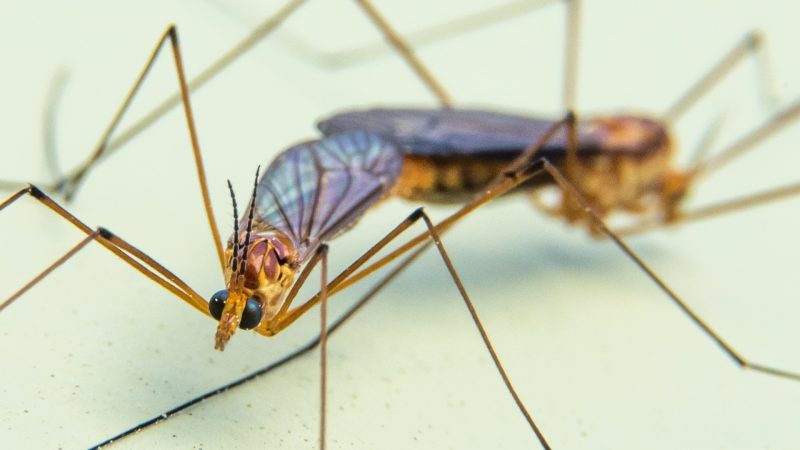
- Scientific Name: Tipulidae
- Size: Typically, they are around 1.2 inches in length. They have slender bodies and super-extended legs. Their wings may extend from ½ to 2 ½ inches.
- Color: Most of these insects have red, black, or yellow color, although it may depend on the type of crane fly. On the other hand, their larvae have a brownish-grayish tinge on their bodies that formed like cylinders.
- Habitat: They can be seen in water areas and even in drylands. Their larvae are found in freshwaters, streams, semi-aquatic areas, woodlands, and open fields.
- Bites: They do not bite or injure humans and animals but can be pests of pasture grasses, golf courses, and crops.
- Infestation: From mid-February to April, adult crane flies may fly and stay on plants and outdoor areas with bright lights. They may also enter homes and establishments since they are attracted to lights.
- Similarity to mosquitoes: Their long legs and slender bodies.
Related: Crane Fly vs. Mosquito: Main Differences, Identification, and Biology
Mayflies
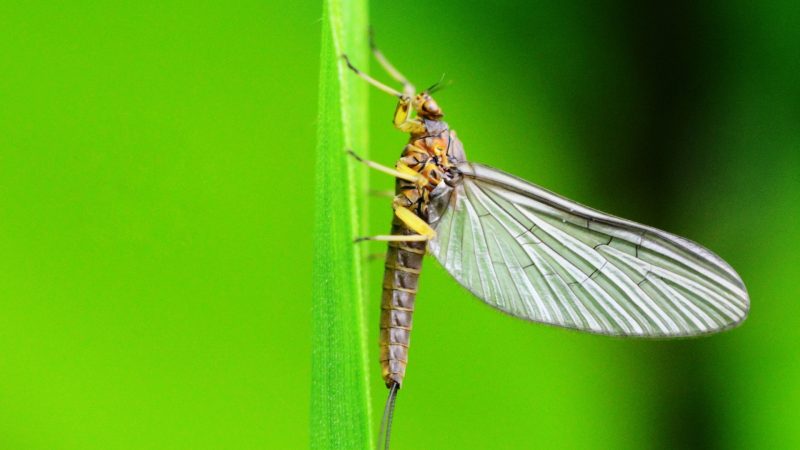
- Scientific Name: Ephemeroptera
- Size: Adult mayflies may measure ½ to 1 inch long.
- Color: The majority of them are gray, but they can also be brown, olive, green, blue, or yellow.
- Habitat: They can be seen under the rocks in streams and some cases, in ponds, lakes, and other aquatic environments.
- Bite: They do not have sucking mouthparts. So generally, they cannot bite.
- Infestation: They are not known to be pests but may be seen swarming around bright lights and above bodies of water.
- Similarity to mosquitoes: Their slender bodies and their ability to accumulate in certain aquatic environments.
Fungus Gnats
- Scientific Name: Sciaridae
- Size: Adult species of fungus gnats can be 1/10 to 1/8 inch long.
- Color: They are gray to black in color, but other types may be yellowish to orange.
- Habitat: They are usually seen around house plants.
- Bite: They do not bite.
- Infestation: They swarm on outdoor plants during the summer. But when the late fall and winter seasons come, they infest on plants that are transferred indoors. This becomes their mode of entry into houses.
- Similarity to mosquitoes: Their slim bodies and extended legs.
Midges
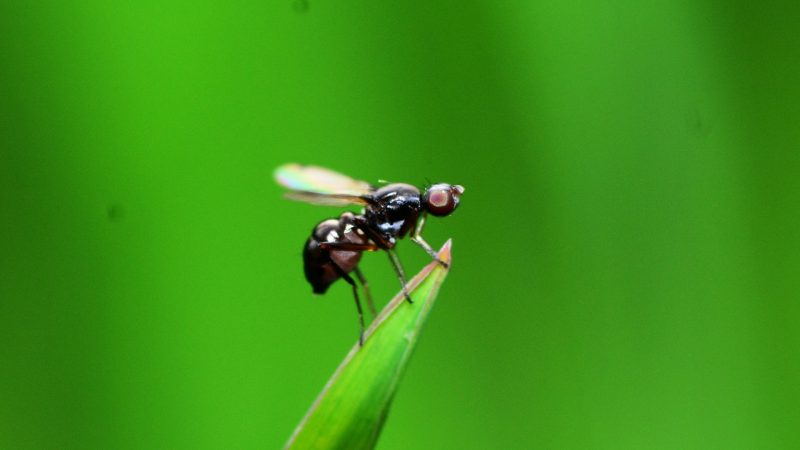
- Scientific Name: Chironomidae
- Size: They have a length of 0.03 to 0.11 inches.
- Color: They have brown, black, gray, white, and yellow colors.
- Habitat: They congregate in areas close to a water source, such as in shorelines, riverbanks, and coastlines.
- Bite: They have short mouth tubes, so they do not bite humans.
- Infestation: They tend to assemble in groups which makes them a nuisance in backyards and covered patios. Also, they are attracted to lights, so they may swarm to areas with bright lighting.
- Similarity to mosquitoes: Their body structure and size.
Dixid Midges
- Scientific Name: Dixidae
- Size: They are small creatures because their body length usually does not exceed 0.2 inches.
- Color: They have yellowish to brownish colors.
- Habitat: The larvae of dixid midges typically reside in unpolluted streams, ponds, marshes, and lakes.
- Bite: They can’t bite as they lack proboscis.
- Infestation: They are not usually considered pests, but they love to swarm along the boundaries of lakes and streams.
- Similarity to mosquitoes: Their sclerotized heads, length of antennae, and mouth brushes.
Owl Midges
- Scientific Name: Psychodidae
- Size: Their size usually ranges from 0.08 to 0.16 inches.
- Color: Their bodies and wings are covered in light brown and gray hairs.
- Habitat: They are mostly found in sinks, ditches, drains, and moist woodlands.
- Bite: They don’t usually bite and do not pose a risk.
- Infestation: They may be a nuisance when they congregate in big numbers. Also, they are usually enticed by bright lights.
- Similarity to mosquitoes: Their leg structures and the ability to stay on stagnant waters.
Dance Flies
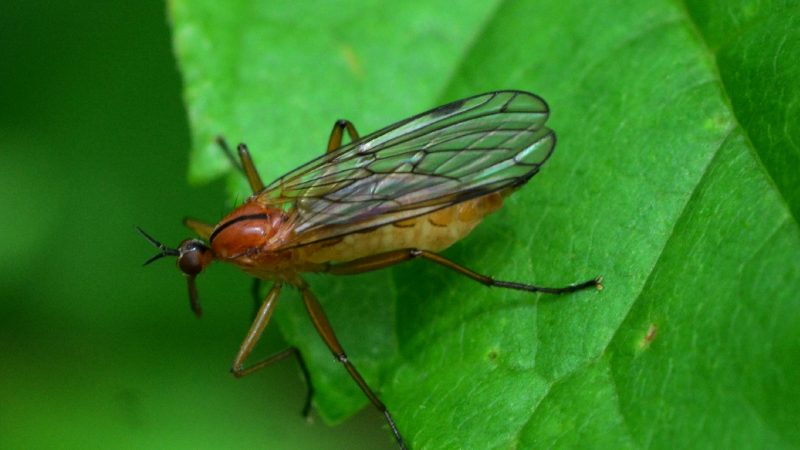
- Scientific Name: Empididae
- Size: They are typically 0.04 to 06 inches long.
- Color: They have a yellow to a black color and are usually lustrous.
- Habitat: They are commonly found in moist conditions and open areas such as pastures while the larvae grow on soil and decaying materials.
- Bites: They do not bite humans or animals but can kill small insects and mosquitoes.
- Infestation: The male species can assemble in large groups while flying up and down in the air to attract females.
- Similarity to mosquitoes: Their habit of swarming around backyards and sheltered areas is comparable to the movements of mosquitoes.
Wood Gnats
- Scientific Name: Anisopodidae
- Size: They have small to medium sizes, usually at 0.16 to 0.5 inches.
- Color: They have a yellowish-to-brownish tinge on their bodies.
- Habitat: They are commonly found in tree trunks, decaying wood or vegetation, damp areas, animal droppings, and mud.
- Bites: They tend to bite humans, and in rare instances, their sting can cause allergic reactions.
- Infestation: They sometimes swarm, especially when fascinated by lights.
- Similarity to mosquitoes: Their slender bodies, thin legs, and proboscis, but their heads are shorter.
Winter Crane Flies
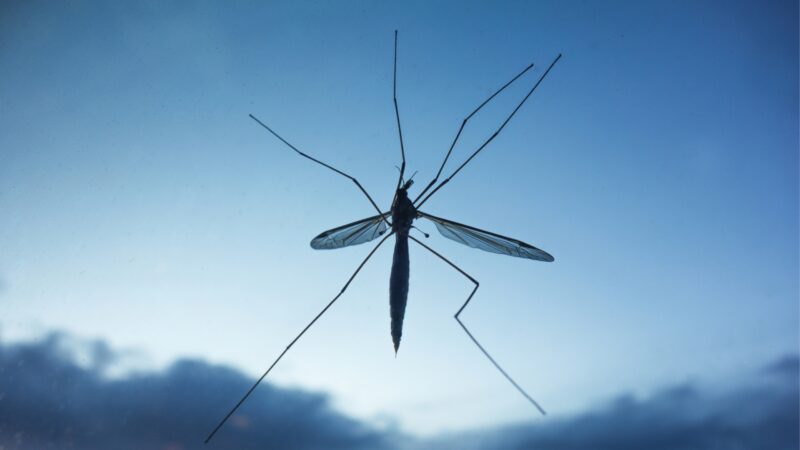
- Scientific Name: Trichoceridae
- Size: They have an average size of 0.2 inches.
- Color: They are dark red to brown in color with a shade of gray.
- Habitat: They reside in wet and moist areas, tubers and roots, decaying leaves, and animal manure, such as that of rodents.
- Bite: They do not incline to bite or sting.
- Infestation: They can be a pest of field crops, pasture grass, and vegetables like cauliflower.
- Similarity to mosquitoes: Their preference to live near water and the character of their wings and legs, although they are usually bigger than mosquitoes.
How to Get Rid of Mosquito-Like Insects Naturally?
If you are looking for natural remedies to combat mosquito-like insects, the following are the best recommendations:
- Make a DIY insect spray. This can be done by using insect-repelling ingredients such as garlic, cayenne pepper, apple cider vinegar, lemon, peppermint, and tea tree. Mix it with water and spray it on areas where mosquito-like pests are prevalent.
- Always clean your surroundings. Mosquito-like insects like to lurk around decaying materials, garbage, and disorganized environments. If these areas are always cleaned and maintained, there are lesser chances of pest infestation.
- Empty and drain containers. You should empty any containers that are filled with stagnant or unused water. The majority of these insects like to fly around still waters, and they could make these areas their new habitat.
- Look around you. Constantly inspect your surroundings for the presence of an infestation. Prevention is always the key to halting the swarming of mosquito-like insects in your place.
What Repels Mosquito-Like Insects?

Insect repellents can be made from natural substances or by artificial and chemical processes.
If you are looking for an effective insect spray that has harmless chemicals, then Sawyer Products 20% Picaridin Insect Repellent is the best choice for you.
- Non-greasy, fragrance free, odorless; dries quickly and won't...
- Safe for use on the whole family, long-lasting insect and tick...
- Fragrance-free topical insect repellent with 20% Picaridin —...
- Very comfortable to wear on your skin, it's ideal for all your...
- Top rated bug repellent by WireCutter/New York Times (May, 2020);...
It contains Picaridin, 1-Methylpropyl-2-(2-hydroxyethyl)-1-piperidine carboxy, and Ethanol that can deter insects and mosquitoes for up to 8 to 12 hours. Additionally, it is also safe to use because it may be applied to the skin, clothing, bags, plastic, and glass.
On the other hand, if you are more on the natural side and desire to utilize organic and affordable insect repellents, you can make use of ingredients such as garlic, lemon, peppermint, apple cider vinegar, tea tree oils, and eucalyptus.
Related: 9 Best Indoor Mosquito Repellent Plants for Every Household
List of Sources
Poorman, J. (2005). Crane Fly. Texas A&M AgriLife Extension Service.
Newton, B. (2004). Mayflies. University of Kentucky Entomology.
Cloyd, R. A., Cransaw, W. S. (2009). Fungus Gnats as Houseplant and Indoor Pests. Colorado State University Extension.
Midges. Missouri Department of Conservation.
- How to Get Rid of Copperheads | Practical Guide - August 27, 2023
- How to Get Rid of Corn Snakes | What Makes Them Aggressive? - August 27, 2023
- How to Get Rid of Alligators | Safety Measures and Removal Methods - July 16, 2023

